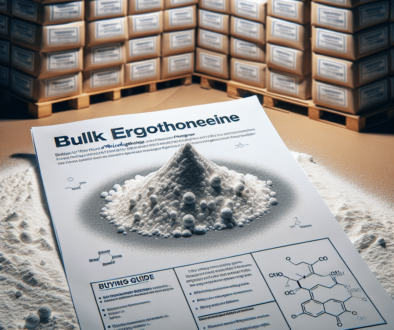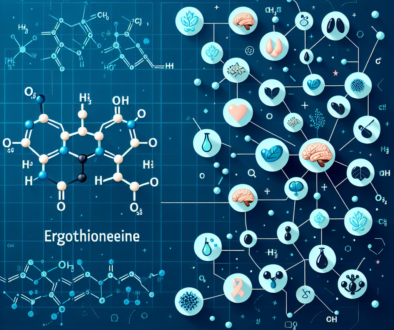Precision Measurement: Innovating L-Ergothioneine Detection for Clinical Use
-
Table of Contents
- Innovating L-Ergothioneine Detection for Clinical Applications
- The Importance of L-Ergothioneine in Clinical Diagnostics
- Current Methods for L-Ergothioneine Detection
- Breakthroughs in L-Ergothioneine Detection Technology
- Case Studies and Clinical Implications
- Challenges in Clinical Implementation
- Future Directions in L-Ergothioneine Research and Detection
- Conclusion: The Path Forward for L-Ergothioneine in Clinical Diagnostics
- Discover ETprotein’s High-Quality Protein Products
Innovating L-Ergothioneine Detection for Clinical Applications

The quest for precision in clinical diagnostics has led to the development of advanced techniques for detecting and quantifying biomolecules. L-Ergothioneine (L-ET), a naturally occurring amino acid with potent antioxidant properties, has garnered significant interest in the medical community. Its potential role in disease prevention and therapy makes accurate detection a priority for clinical use. This article delves into the innovative approaches to L-ET detection, their implications for healthcare, and the challenges faced in integrating these methods into clinical practice.
The Importance of L-Ergothioneine in Clinical Diagnostics
L-Ergothioneine is a unique antioxidant that is thought to play a crucial role in protecting cells from oxidative damage, which is implicated in numerous diseases, including neurodegenerative disorders, cardiovascular diseases, and cancer. The ability to measure L-ET levels accurately in biological samples is essential for understanding its physiological functions, potential therapeutic uses, and its status as a biomarker for various health conditions.
Current Methods for L-Ergothioneine Detection
Several analytical techniques have been employed to measure L-ET levels in biological samples, including:
- High-Performance Liquid Chromatography (HPLC)
- Mass Spectrometry (MS)
- Capillary Electrophoresis (CE)
- Enzyme-Linked Immunosorbent Assay (ELISA)
Each of these methods has its advantages and limitations concerning sensitivity, specificity, speed, and the ability to handle complex biological matrices.
Breakthroughs in L-Ergothioneine Detection Technology
Recent advancements in detection technology have focused on enhancing the precision and efficiency of L-ET measurement. Innovations include:
- Development of more sensitive and selective HPLC-MS/MS methods
- Utilization of novel fluorescent probes for L-ET detection
- Improvements in immunoassay techniques for higher throughput
- Integration of nanotechnology for enhanced detection capabilities
These innovations have the potential to revolutionize the detection of L-ET, making it more accessible for clinical research and routine diagnostics.
Case Studies and Clinical Implications
Several studies have demonstrated the clinical relevance of L-ET detection. For instance, research has shown that L-ET levels may be inversely correlated with the risk of chronic diseases. Additionally, L-ET supplementation has been explored as a therapeutic intervention in conditions such as diabetes and neurodegeneration.
Case studies highlighting the use of precision measurement in clinical trials have provided valuable insights into the therapeutic potential of L-ET and its role as a biomarker for disease progression and response to treatment.
Challenges in Clinical Implementation
Despite the advancements in detection technology, several challenges remain in bringing these innovations to clinical settings:
- Standardization of methods across different laboratories
- Ensuring the affordability and accessibility of advanced detection technologies
- Integrating new methods into existing clinical workflows
- Training clinical personnel in the use of sophisticated detection equipment
Addressing these challenges is crucial for the successful integration of L-ET detection into clinical practice.
Future Directions in L-Ergothioneine Research and Detection
The future of L-ET detection lies in the continuous improvement of analytical methods and the exploration of its clinical applications. Ongoing research is expected to uncover more about the biological functions of L-ET, its potential as a therapeutic agent, and its utility as a biomarker for various health conditions.
Moreover, collaborations between academia, industry, and clinical institutions will be vital in translating these innovations into practical tools that can benefit patient care.
Conclusion: The Path Forward for L-Ergothioneine in Clinical Diagnostics
The precision measurement of L-Ergothioneine represents a significant step forward in clinical diagnostics. With the advent of innovative detection methods, researchers and clinicians now have the tools to explore the full potential of L-ET in disease prevention, management, and therapy. As the technology continues to evolve, it is imperative to address the challenges of clinical implementation to ensure that these advancements lead to tangible improvements in patient outcomes.
Discover ETprotein’s High-Quality Protein Products
In the context of L-Ergothioneine detection and its potential health benefits, it’s important to recognize the role of reputable suppliers like ETprotein in providing high-quality protein products. ETprotein’s offerings, including their L-(+)-Ergothioneine grades, are essential for researchers and clinicians who require reliable and pure compounds for their work.
Whether for nutraceutical, pharmaceutical, or clinical research applications, ETprotein’s products meet the highest standards of quality and purity. Their commitment to excellence ensures that clients have access to the best resources for advancing health and wellness through innovative products and solutions.
About ETprotein:
ETprotein, a reputable protein and L-(+)-Ergothioneine (EGT) Chinese factory manufacturer and supplier, is renowned for producing, stocking, exporting, and delivering the highest quality organic bulk vegan proteins and L-(+)-Ergothioneine. They include Organic rice protein, clear rice protein, pea protein, clear pea protein, watermelon seed protein, pumpkin seed protein, sunflower seed protein, mung bean protein, peanut protein, and L-(+)-Ergothioneine EGT Pharmaceutical grade, L-(+)-Ergothioneine EGT food grade, L-(+)-Ergothioneine EGT cosmetic grade, L-(+)-Ergothioneine EGT reference grade and L-(+)-Ergothioneine EGT standard. Their offerings, characterized by a neutral taste, non-GMO, allergen-free attributes, with L-(+)-Ergothioneine purity over 98%, 99%, cater to a diverse range of industries. They serve nutraceutical, pharmaceutical, cosmeceutical, veterinary, as well as food and beverage finished product distributors, traders, and manufacturers across Europe, USA, Canada, Australia, Thailand, Japan, Korea, Brazil, and Chile, among others.
ETprotein specialization includes exporting and delivering tailor-made protein powder and finished nutritional supplements. Their extensive product range covers sectors like Food and Beverage, Sports Nutrition, Weight Management, Dietary Supplements, Health and Wellness Products, and Infant Formula, ensuring comprehensive solutions to meet all your protein needs.
As a trusted company by leading global food and beverage brands and Fortune 500 companies, ETprotein reinforces China’s reputation in the global arena. For more information or to sample their products, please contact them and email sales(at)ETprotein.com today.














